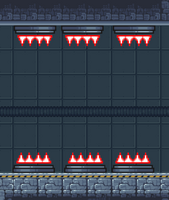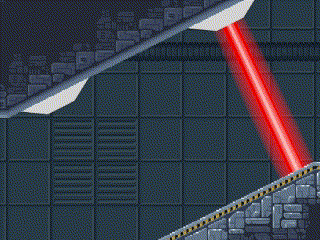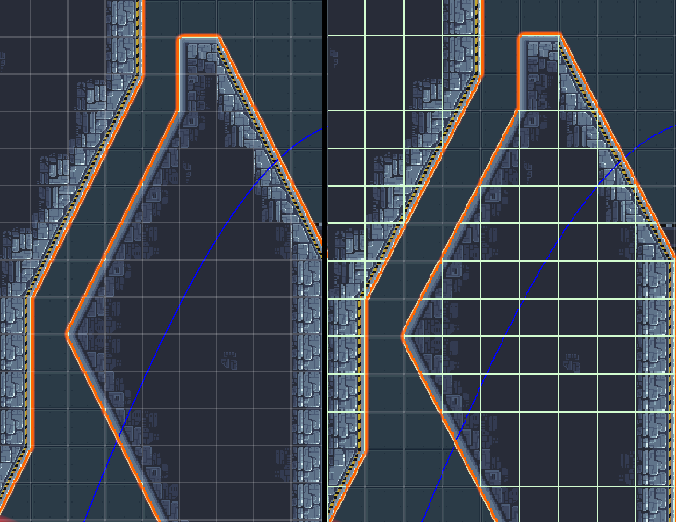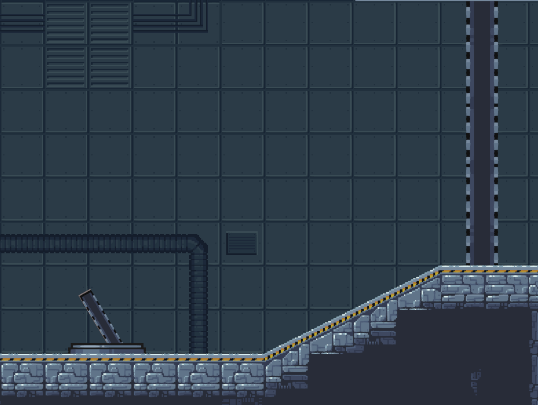Devlog #6: Tilemaps, Sprites and Visuals


Introduction
Welcome back to Subject 13! This devlog, after a couple chocolate fuelled days, marks a big visual milestone. The moment Subject 13 finally stops looking like a physics prototype and starts looking like an actual game. The focus this week was integrating art, building out tile based levels, and combining the new graphics into the existing collision system.
Asset sourcing & art direction
The core art for this project is coming from Foozle’s amazing asset pack, The Sci-Fi Lab – Tileset, Decor & Traps collection as well as a mix of self made assets to build apon Foozles pack. The pack’s clean pixel style, accents colors, and modular 16 × 16 tiles slot perfectly into the sterile but menacing ambient atmosphere that I wanted for the feel of the lab.
As for the art direction for potential other areas within the game it will be consistant with the 16 x 16 pixel art with the exceptions been the UI elements and the Player. This is done to draw the players eye to key points as it'll naturally have a distinct visual diffrence.

From tileset to tilemap
To turn the raw sprites sheet into useable tiles I used Unity’s 2D Tilemap workflow, but with a few key tweaks. First, every wall and floor tile is driven by a custom rule tile that recognises corners and edges, correctly swapping in the appropriate sprite allowing for level creation to be a paint and forget operation.
Next, the visuals are split across three dedicated tilemaps: a static background layer, an interactive mid layer, and a foreground detail layer. This level of control allows for a more dynamic control over the enviroment, Effects such as the slime splatter masks can target just the layer they need without effecting other layers unnecessarily.
Finally, instead of attaching a Box Collider to every individual tile (which would have been incredibly innificent for this use case) we use a tilemap collider 2D component on the gameplay layer and immediately pass it through Unity’s Composite Collider component in Outline mode. This means that adjacent tiles fuse into a single polygon, eliminating thousands of tiny edges and therefore cutting the number of previous collision checks to a fraction of their former compute time.

Visual polish
The visual polish of a game is what can really bring all the elements of a game or idea into one cohesive package
below are some of the things that have already been done to add visual polish and others are things that still need to be implemented.
Already impletmented:
- Dynamic splatter integration: Last month’s splatter mask system was updated so each surface grabs its mask sprite from the new tiles, giving perfect edge-bleed and colour variance on every material.
Still need to be added:
- Lighting: 2D URP lights now cast a soft cyan glow from computer screens and a pulsing red from alarms/other light scources (flat sprites look more natural with subtle light spill)
- Post-processing: A lightweight bloom + chromatic aberration effect to kick in when gravity flips, selling the “inverted” feel without any motion sickness.

What’s next?
- Gravity-flip cooldown UI.
- Main menu + settings and level select
- Pause menu
- First vertical slice test level
- Saving and loading
And with that, its a wrap for Devlog 6. Subject 13 finally looks like a secret lab instead of a dull collection of shapes on the default background. It's really starting to feel like its coming together into a cohesive package and it feels great. As always, feedback and comments are always welcome.
See you in next week’s devlog, where we’ll (hopefully) have a playable slice that you can interact with.
Get Subject 13
Subject 13
The experiment was a success. The containment was not.
| Status | In development |
| Author | Michael kronfeld |
| Genre | Puzzle |
| Tags | 2D, Side Scroller, softbody, Unity |
More posts
- Devlog #9: Launch and LevelsMay 18, 2025
- Devlog #8: Saving, Loading and Visual PolishMay 06, 2025
- Devlog #7: Menus, Vertical slice and Beta feedbackApr 28, 2025
- Devlog 5#: Turrets, Cameras and Controller supportApr 13, 2025
- Devlog #4:Lasers and splattersApr 06, 2025
- Devlog #3: Doors, spikes and respawningMar 29, 2025
- Devlog #2: Dynamic mesh creation, Movement & CinemachineMar 03, 2025
- Devlog #1: Soft-body physicsFeb 15, 2025
Leave a comment
Log in with itch.io to leave a comment.